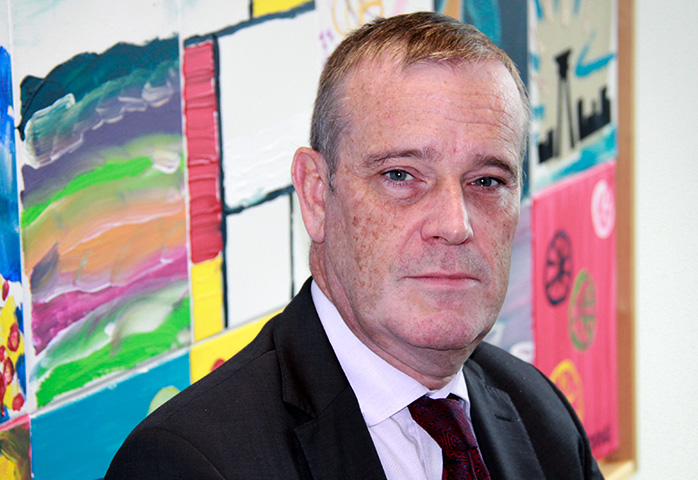Interview with European Investment Fund Deputy Chief Executive

Related topics
Capital Markets Uniondate: 26/09/2017
See also: Inside this issue
Financial instruments are tools to provide financial support from the EU budget through loans, guarantees, and equity (or quasi-equity) investments for the implementation of projects. They have been playing an increasingly important role in funding European companies over the past few years and represent a vital component of the EU's flagship Capital Markets Union (CMU). For instance, the European Commission and the European Investment Fund (EIF) recently launched the pan-European Venture Capital Fund-of-Funds, which was announced in the CMU action plan in September 2015. We took this opportunity to talk to Roger Havenith, Deputy Chief Executive of the EIF, about the VC Fund-of-Funds as well as the role of financial instruments more generally.
What would you say is the real added value of financial instruments?
Financial instruments help us achieve EU policy objectives by allowing us to do more with less. They multiply the impact of EU funds by crowding in other (private) investors and sharing risks. This ultimately results in greater financial assistance for European SMEs.
Under the European Fund for Strategic Investments (EFSI) financial instruments, EIF has committed EUR 4 billion, which is expected to leverage more than EUR 40 billion worth of financing for SMEs and mobilise over EUR 70 billion of additional investments.
But financial instruments are not just about enhanced access to financing for SMEs. They also offer benefits such as lower collateral requirements or slimmer interest rates.
Financial instruments also allow the significant re-use of EU funds. During the 2007-2013 programming period, EIF-managed JEREMIE holding funds generated close to EUR 180 million in reflows.
In equity investments, the added value of financial instruments goes beyond the initial investment to contribute to the development of the entire equity ecosystem. In Bulgaria, where EIF invested EUR 20 million, we have seen a further EUR 20 million committed by business angels, VC and other private investors in 200 start-up companies. This is a significant spill-over effect in a market that was under-developed.
A recent study of the venture capital ecosystem in Europe concluded that a 1% increase in EIF-provided VC capital in a region led to a 1.4% increase in investment volumes by other market players in the same region. This crowding-in effect was strongest in areas with less-developed venture-capital markets – that is to say, where support is needed most.
Going forward, what do you think could be improved?
Cutting red tape is very important. In many ways, the legislative framework is still tailored more towards grants than financial instruments. We need to further adapt legislation, checks and controls to the realities of financial instruments to avoid overburdening prospective partners and private actors with disproportionate obligations. Streamlining the rules is key and a ‘single rule book’ would be a very good idea. Coordinated audits building on the work done by other auditors would be a very welcome development.
Flexibility is also important. Market needs evolve and the regulatory framework must be flexible enough to allow financial instruments to develop and adjust in response.
Solid ex-ante assessments and market studies can help tailor financial instruments to meet these market needs. I think that we are moving in the right direction on this point, but we need to keep improving.
Beyond our work, progress on the Capital Markets Union will ensure smoother cross-border activity which will make the use of financial instruments – particularly market-based finance such as equity or securitisation – even more effective.
I believe that we also need to better showcase the impact financial instruments can have. This is something that we are working on already at EIF. For example, we recently carried out research on growth-patterns of EIF-backed start-ups.
In the same vein, we need to strengthen our communication. Financial instruments can make financing more readily available for European SMEs, thus boosting growth and employment. We need to make this message clear to European citizens.
How do you see the road ahead? What role do you see financial instruments playing in future EU budgets?
I would expect financial instruments to play an even more prominent role in the next programming period.
We have been working with our partners at the European Commission to design products and instruments that address specific sectors or market needs and support EU businesses at various stages in their development. The EU has a strong track record in supporting non-revenue generating projects like research, but we need to ensure that this research takes the next step to commercialization. This is why we are exploring Grant-2-Loan and Grant-2-Equity instruments.
We also need to ensure that growth capital is available to the EU’s existing successful start-ups, in order to avoid them leaving for other geographic areas where funding may be more readily available.
The recent launch of the pan-European VC Fund-of-Funds initiative is important in addressing Europe’s equity gap, the fragmentation of the VC market, and attracting additional private funding from institutional investors.
Under this initiative, EIF will commit up to EUR 400 million into various funds-of-funds, matched by private investors. These funds-of-funds will invest in venture-capital funds that will in turn support European SMEs through equity investments. By crowding-in private funding at three levels – the funds-of-funds, the underlying venture capital funds and the SMEs – this mechanism will trigger cascading investments in innovative and growing businesses across Europe. This is a key contribution to the Capital Markets Union, one of the EU’s top priorities.
Finally, it will be important to blend different resources. We have been doing that with great success on the debt side under the SME Initiative, using EU Structural and Investment Funds alongside resources like COSME and InnovFin and we are currently looking into new opportunities in other areas like agriculture.
Read more about the European Investment Fund

